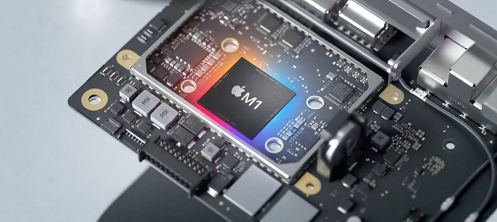
Data Sanitization on M1 Chips: Ensuring Security in the Apple Silicon Era
Introduction:
In the rapidly evolving landscape of technology, Apple's M1 chips have emerged as a game-changer, offering enhanced performance and efficiency. As businesses and individuals alike transition to devices powered by M1 chips, it becomes imperative to address the crucial aspect of data security. Data sanitization, the process of securely and irreversibly removing sensitive information from storage devices, takes on a new dimension with the unique architecture of M1 chips. In this article, we will explore the significance of data sanitization on M1 chips and discuss best practices to ensure robust security.
Understanding M1 Chip Architecture:
The M1 chip, designed by Apple, represents a shift from Intel processors to an ARM-based architecture. This transition brings several advantages, such as improved energy efficiency, increased processing speed, and enhanced graphics performance. However, the unique structure of M1 chips poses challenges when it comes to data sanitization.
M1 chips consist of multiple high-performance cores, unified memory architecture, and advanced security features like the Secure Enclave. These components work seamlessly to deliver superior performance but also demand a nuanced approach to data sanitization. Traditional methods may not be sufficient to address the intricacies of M1 chip storage systems.
Importance of Data Sanitization on M1 Chips:
Data breaches and privacy concerns have become ubiquitous in the digital age, making data sanitization a critical aspect of cybersecurity. On M1 chips, where data storage is intricately connected with the unified memory architecture, the need for effective sanitization becomes even more pronounced. Failing to adequately sanitize data on M1 devices may expose sensitive information, leaving users vulnerable to various security threats.
1. Challenges of Data Sanitization on M1 Chips:
a. Unified Memory Architecture: M1 chips utilize a unified memory architecture, allowing the CPU and GPU to share the same memory pool. This integration poses challenges in isolating and erasing data completely, requiring specialized approaches for effective data sanitization.
b. Secure Enclave: The M1 chip incorporates a Secure Enclave for storing sensitive information such as biometric data and encryption keys. This adds an extra layer of complexity to data sanitization, as the Secure Enclave demands specific protocols to ensure the complete removal of confidential data.
c. File System Changes: M1 devices operate on the Apple File System (APFS), which introduces differences compared to older file systems. Data sanitization processes need to adapt to these changes to ensure thorough and effective removal of sensitive information.
2. Best Practices for Data Sanitization on M1 Chips:
a. Utilize Specialized Software: Given the unique architecture of M1 chips, relying on specialized software designed for Apple Silicon is crucial. Companies offering data sanitization tools are adapting to the evolving technology landscape, providing solutions tailored to M1 chip requirements.
b. Implement Secure Erase Protocols: Secure erase protocols, such as those compliant with the National Institute of Standards and Technology (NIST) guidelines, should be implemented. These protocols ensure that data is overwritten multiple times, making it practically impossible to recover.
c. Leverage Encryption: Before sanitizing data, leveraging encryption adds an additional layer of security. By encrypting data and then securely erasing the encryption keys, the chances of unauthorized access or recovery are significantly reduced.
d. Incorporate Secure Boot and Activation Lock: M1 chips come equipped with features like Secure Boot and Activation Lock, which enhance device security. Leveraging these features in conjunction with data sanitization practices strengthens the overall security posture of M1 devices.
e. Regular Audits and Updates: Data sanitization practices should not be static. Regular audits and updates of sanitization processes ensure that they remain effective in the face of evolving threats and technological advancements.
Conclusion:
As the digital landscape continues to evolve, the importance of data sanitization on M1 chips cannot be overstated. The unique architecture of Apple's M1 chips demands a specialized approach to ensure the complete and secure removal of sensitive information. By adopting best practices, leveraging specialized software, and staying abreast of the latest developments in data sanitization, users and organizations can harness the full potential of M1 devices while safeguarding their valuable data from potential security threats. As technology continues to advance, the synergy between robust data sanitization practices and innovative hardware solutions will be crucial in establishing a secure and resilient digital environment.